The Construction of Mega Tuas Port
Â
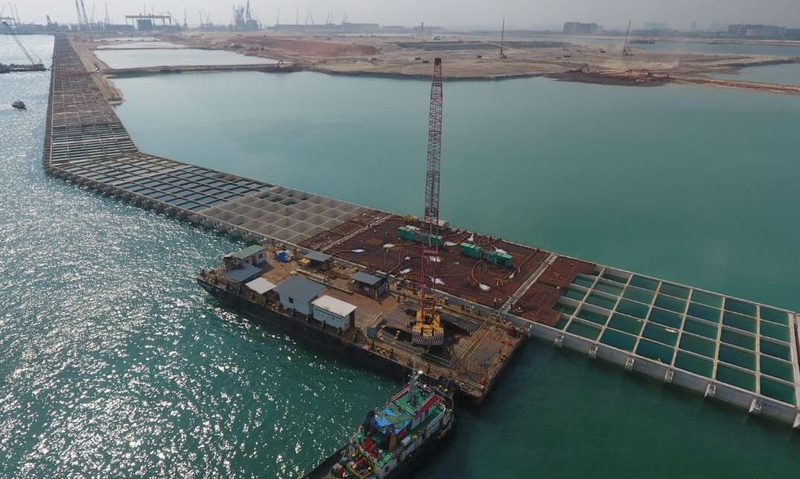
Â
We previously explored Singapore's maritime significance and why the Mega Tuas Port is a game-changer for the country. You can check out that article here.
Â
As of now, Phase 1 of the Mega Tuas Port has successfully installed 221 caissons and is on track to complete all reclamation work by 2021. Over 2,000 workers and supervisors are currently on site, and construction on Phase 2 has already begun.
Â
Mega Tuas Port is designed to accommodate ultra-large container vessels with a capacity of up to 24,000 TEU and a water depth of 24 meters. This means it will be able to handle any vessel in the world when it becomes operational, making it the largest port globally.
Â
Explore our guide to the key construction equipment used in this massive project.
Â
So, how exactly is the Mega Tuas Port being built?
Â
The Maritime and Port Authority of Singapore (MPA) is using caisson technology to build the port. Caissons are large, prefabricated structures that are sunk into the seabed to form a solid foundation. They are commonly used in underwater construction projects, such as dams, bridge piers, and breakwaters.
Â
This method has been used for centuries and is now playing a crucial role in the development of Mega Tuas Port. The caissons are used to create a seawall that will protect the reclaimed land inside the port area.
Â
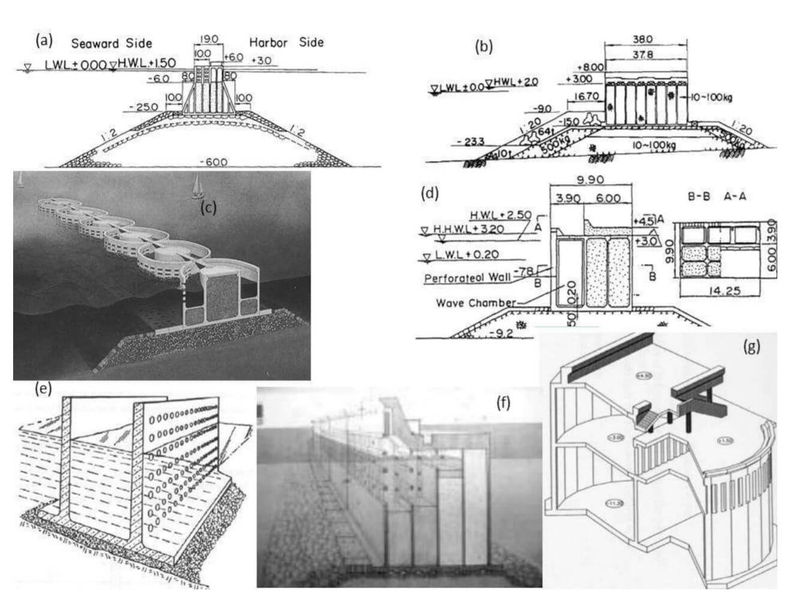
Â
Compared to traditional methods like piling, caisson construction is safer and more efficient. It’s also faster, which helps speed up the entire project. For Mega Tuas, the caissons are among the largest in the world—each weighing 15,000 tonnes and standing over 28 meters tall, roughly the height of a 10-story building.
Â
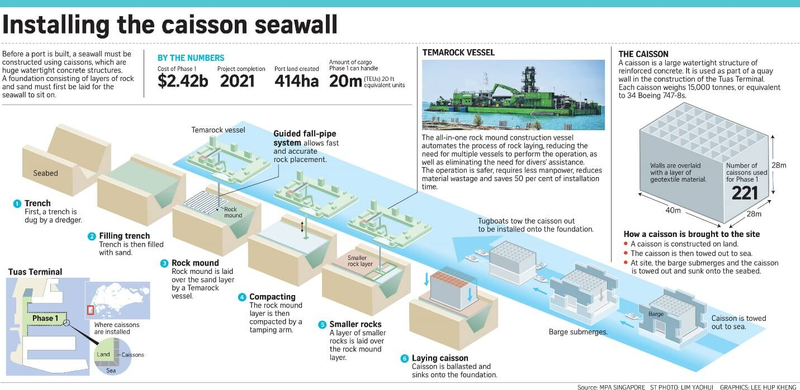
Â
The image above shows the process of constructing the seawall. Once the caissons are in place, the area inside the wall is filled with sand and other materials to create solid land for the port terminal.
Â
To install the caissons, a rock mound foundation is first built on the seabed. Here’s how the process works:
Â
- A mega dredger digs a trench to the required depth along the installation site. The world's largest grab dredger, with a bucket capacity of 200 cubic meters, is being used for this task.
- The trench is then filled with sand using the Temarock vessel.
- The vessel lays a layer of rock on top of the sand.
- It compacts the sand using a tamping arm.
- Finally, a smaller rock layer is added and leveled for precise caisson placement.
“The Temarock vessel is an advanced, all-in-one solution that streamlines the rock mound construction process. Unlike traditional methods that require multiple vessels and divers, Temarock automates the entire process, improving efficiency and safety.â€
Â
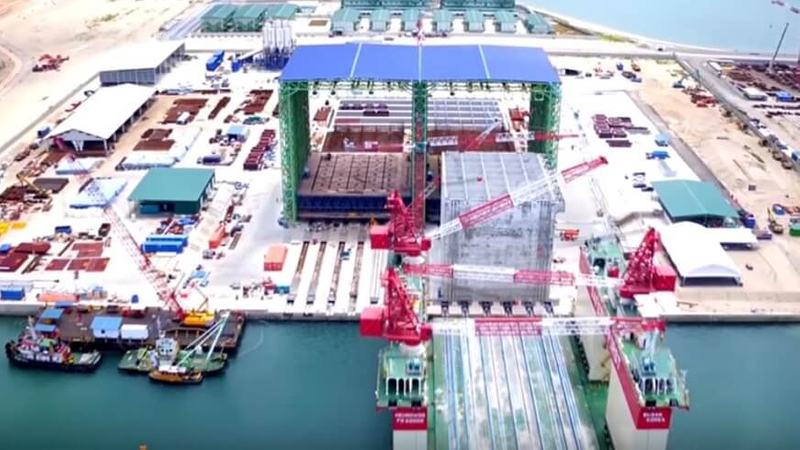
Â
Meanwhile, the caissons themselves are being built at two on-site fabrication yards. These facilities allow two caissons to be constructed simultaneously, significantly accelerating the timeline.
Â
- Caissons are cast layer by layer using around 1,000 cubic meters of concrete each. They can vary in size depending on design needs.
- Once completed, they are moved onto a floating dock.
- The caissons are then towed to the installation site, where they are submerged and floated into position.
- At the final location, they are ballasted with seawater to sink onto the prepared foundation.
- Finally, the caissons are filled with sand and a reinforced deck is poured to create a solid base.
“To handle the massive amount of rebar needed, the project uses an Automatic Rebar Machine using Robotics System (ARMS). This system automates the cutting and bending of steel bars, reducing manual labor and increasing safety on the job site.â€
Â
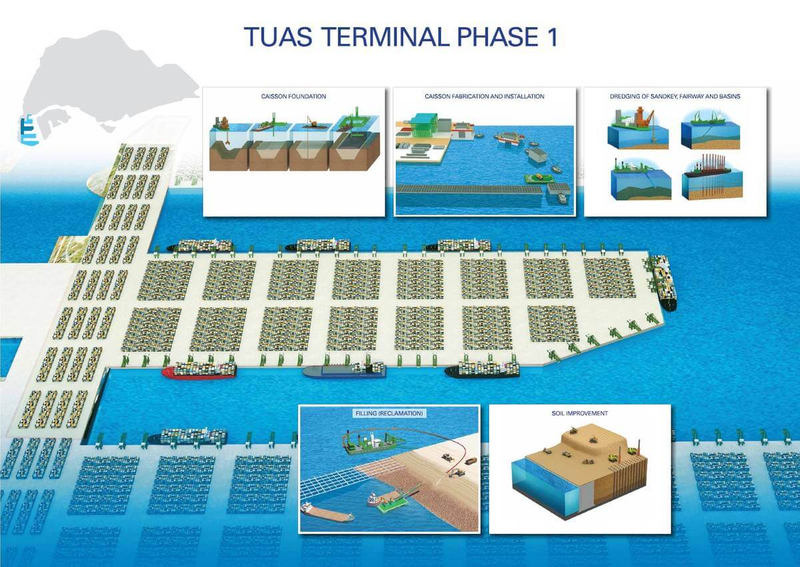
Â
Once the caissons are in place, the internal area is reclaimed to form new land. Afterward, the port infrastructure and facilities are built on top of it.
Â
The project also emphasizes sustainability by reusing excavated earth from other construction sites. This approach reduces the need for sand by up to 70% in Phase 1 and 50% in Phase 2, saving millions in costs.
Â
Here’s a quick look at the progress of Phase 1 through a short video:
Â
Â
Don’t forget to like and share our Facebook page for more updates! bit.ly/34MdSFh, we’ll keep you informed with more exciting content.
Â
RENT EQUIPMENT HERE
Â
We are Singapore’s first intelligent digital platform dedicated to transforming the traditional construction equipment rental experience into a seamless, touchless process. Discover more with us today!
NPK Water Soluble Fertilizer Containing Pure Natural Astaxanthin
NPK Soluble Fertilizer Containing Pure Natural Astaxanthin, Pure Natural Astaxanthin, NPK fertilizer
Yantai Hongyuan Bio-fertilizer Co.,Ltd. , https://www.hongyuanlinong.com